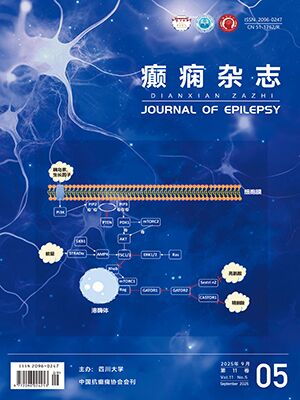| 1. |
Ngugi AK, Bottomley C, Fegan G, et al. Premature mortality in active convulsive epilepsy in rural Kenya:causes and associated factors. Neurology, 2014, 82(11):582-589.
|
| 2. |
林庆, 刘晓燕,秦炯. 实用小儿癫痫病学. 北京:北京科学技术出版社,2004:47-51.
|
| 3. |
Hilliard ME, Hahn A, Ridge AK, et al. User preferences and design recommendations for an mHealth app to promote cystic fibrosis self-management. JMIR mHealth and uHealth, 2014,2(3):e44.
|
| 4. |
Goh G, Tan NC, Malhotra R, et al. Short-term trajectories of use of a caloric-monitoring mobile phone app among patients with type 2 diabetes mellitus in a primary care setting. J Med Internet Res, 2015,17(2):e33.
|
| 5. |
Lorig KR, Holman H. Self-management education:history, definition, outcomes and mechanisms. Ann Behav Med, 2003, 26(3):1-7.
|
| 6. |
Arnhold M, Quade M, Kirch W. Mobile applications for diabetics:a systematic review and expert-based usability evaluation considering the special requirements of diabetes patients age 50 years or older. J Med Internet Res, 2014, 16(4):e104.
|
| 7. |
Kumar N, Khunger M, Gupta A, et al. A content analysis of smartphone-based applications for hypertension management. JASH, 2015, 9(1):130-136.
|
| 8. |
Pandher PS, Bhullar KK. Smartphone applications for seizure management. J Health Informatics, 2015, 172(6):1507-1516.
|
| 9. |
Le S, Shafer PO, Bartfeld E, et al. An online diary for tracking epilepsy. Epilepsy Behav, 2011, 22(2):705-709.
|
| 10. |
Kassam-Adams N, Marsac ML, Kohser KL, et al. A new method for assessing content validity in model-based creation and iteration of eHealth interventions. J Med Internet Res, 2015, 17(7):e95.
|
| 11. |
Piette JD, Striplin D, Marinec N, et al. A mobile health intervention supporting heart failure patients and their informal caregivers:a randomized comparative effectiveness trial. J Med Internet Res, 2015, 17(3):142.
|
| 12. |
McGillicuddy JW, Weiland AK, Frenzel RM, et al. Patient attitudes toward mobile phone-based health monitoring:questionnaire study among kidney transplant recipients. J Med Internet Res, 2013, 15(4):6.
|




